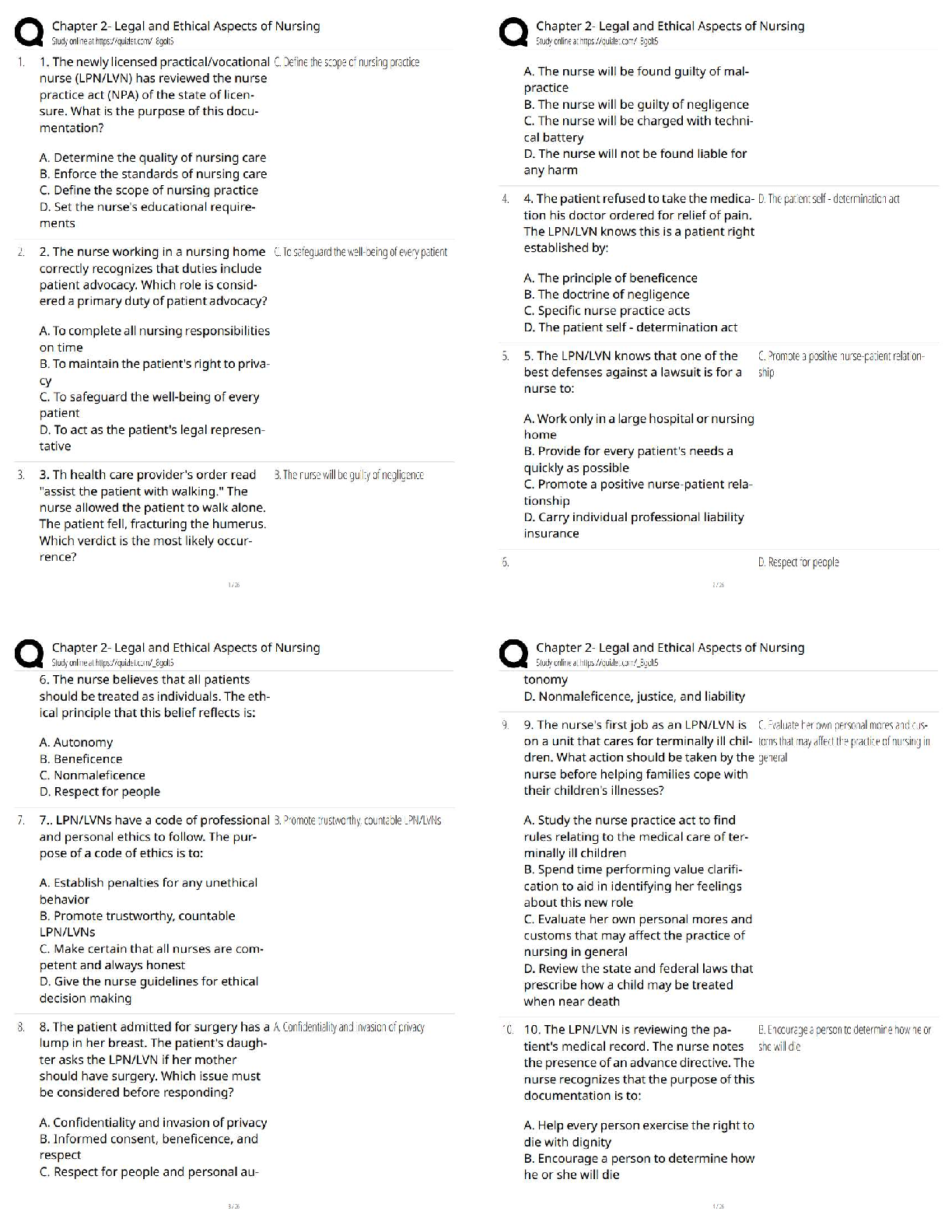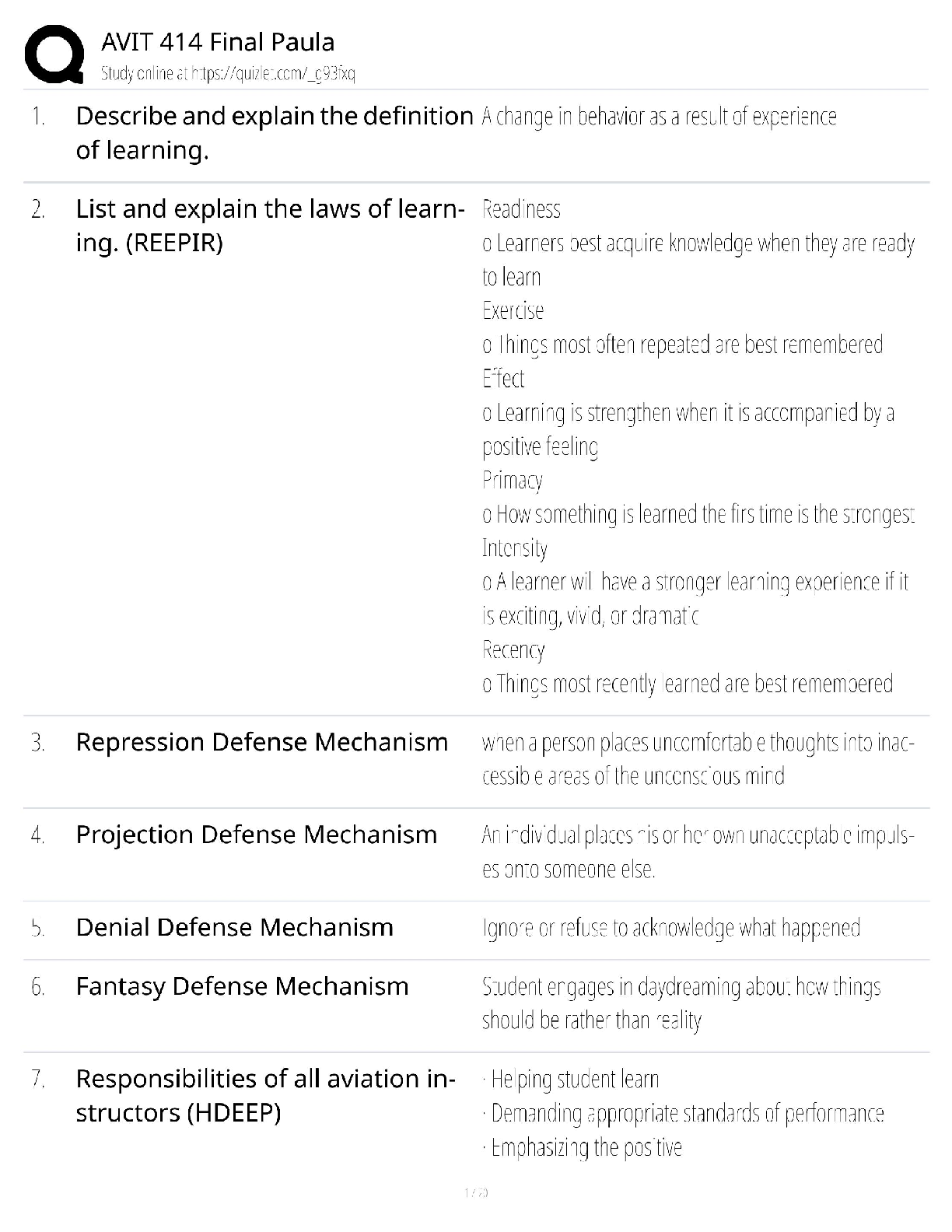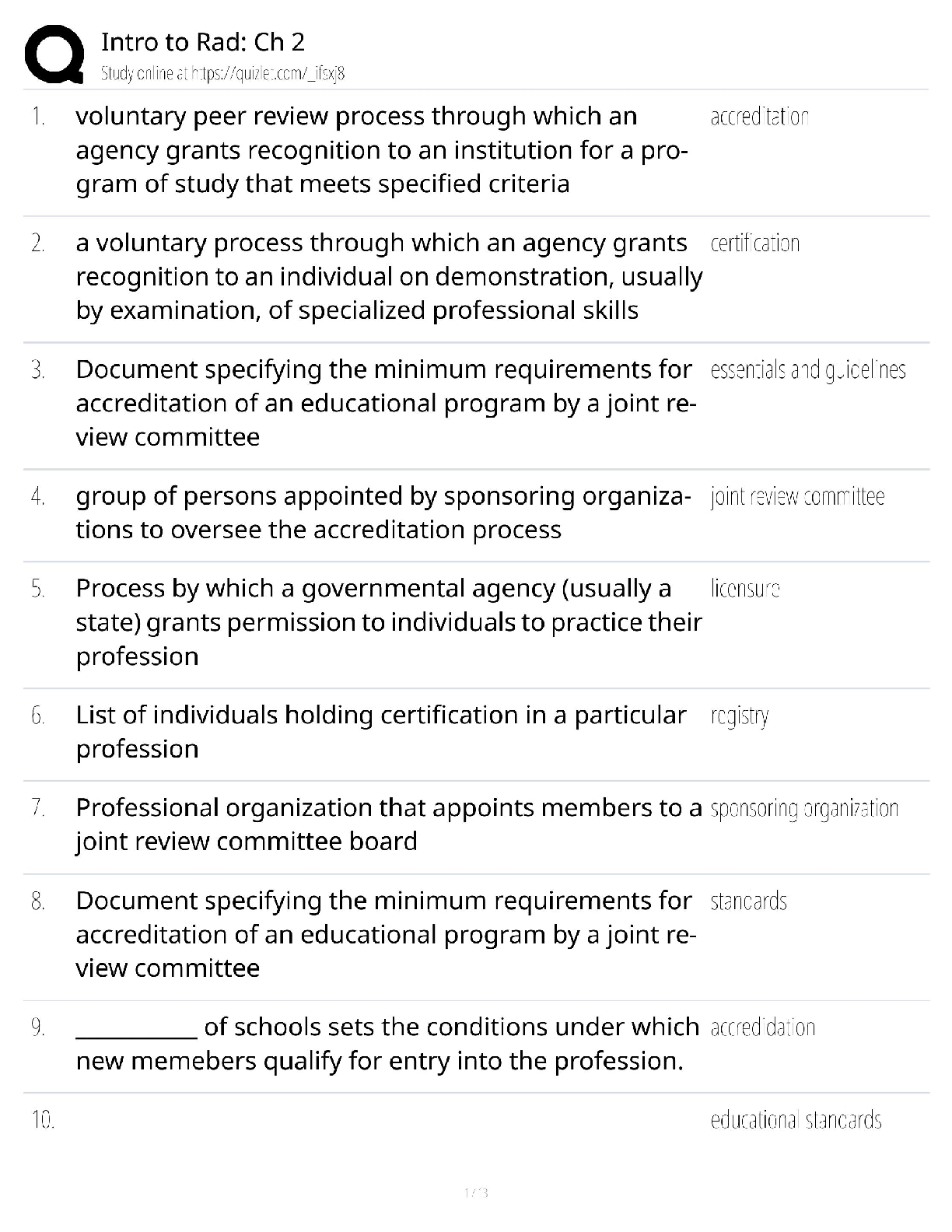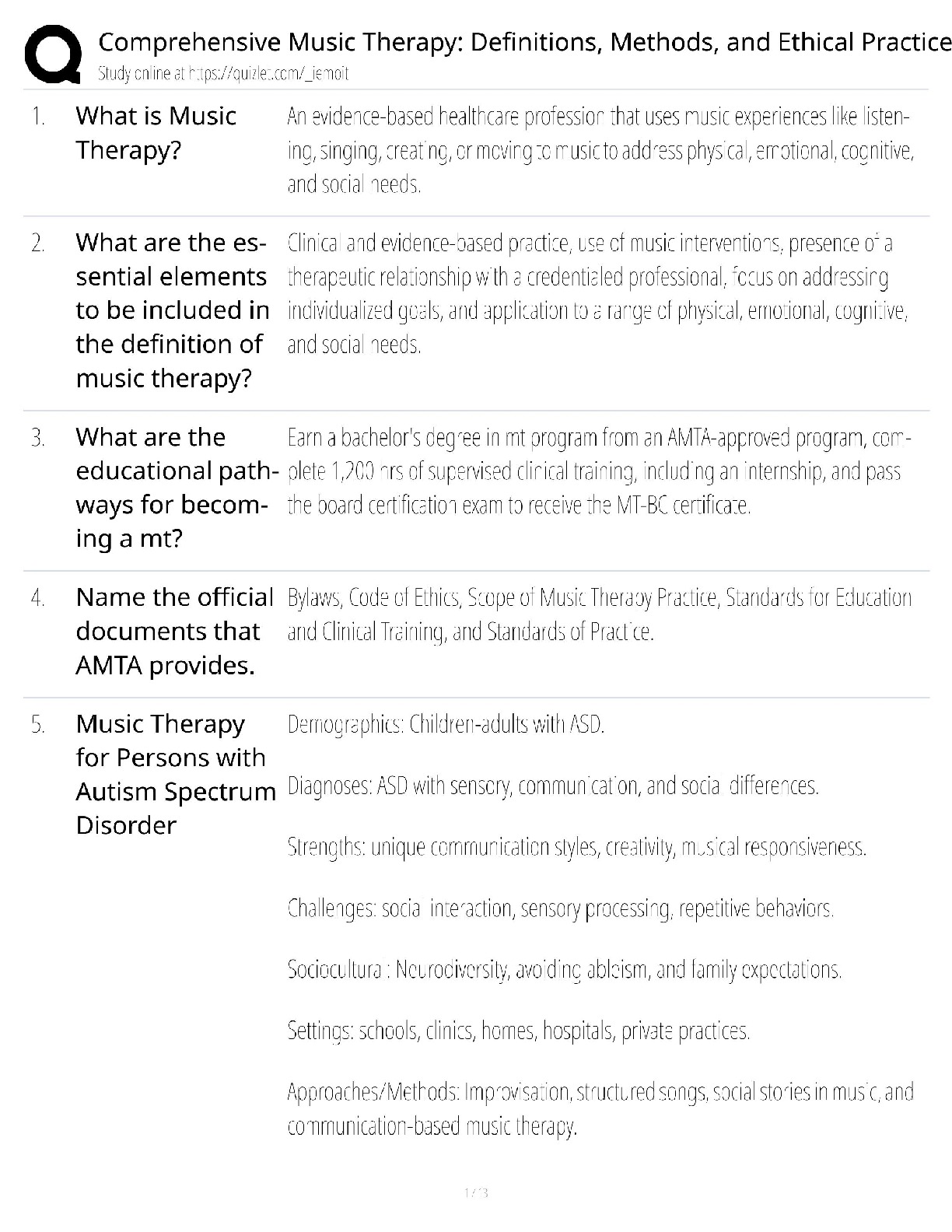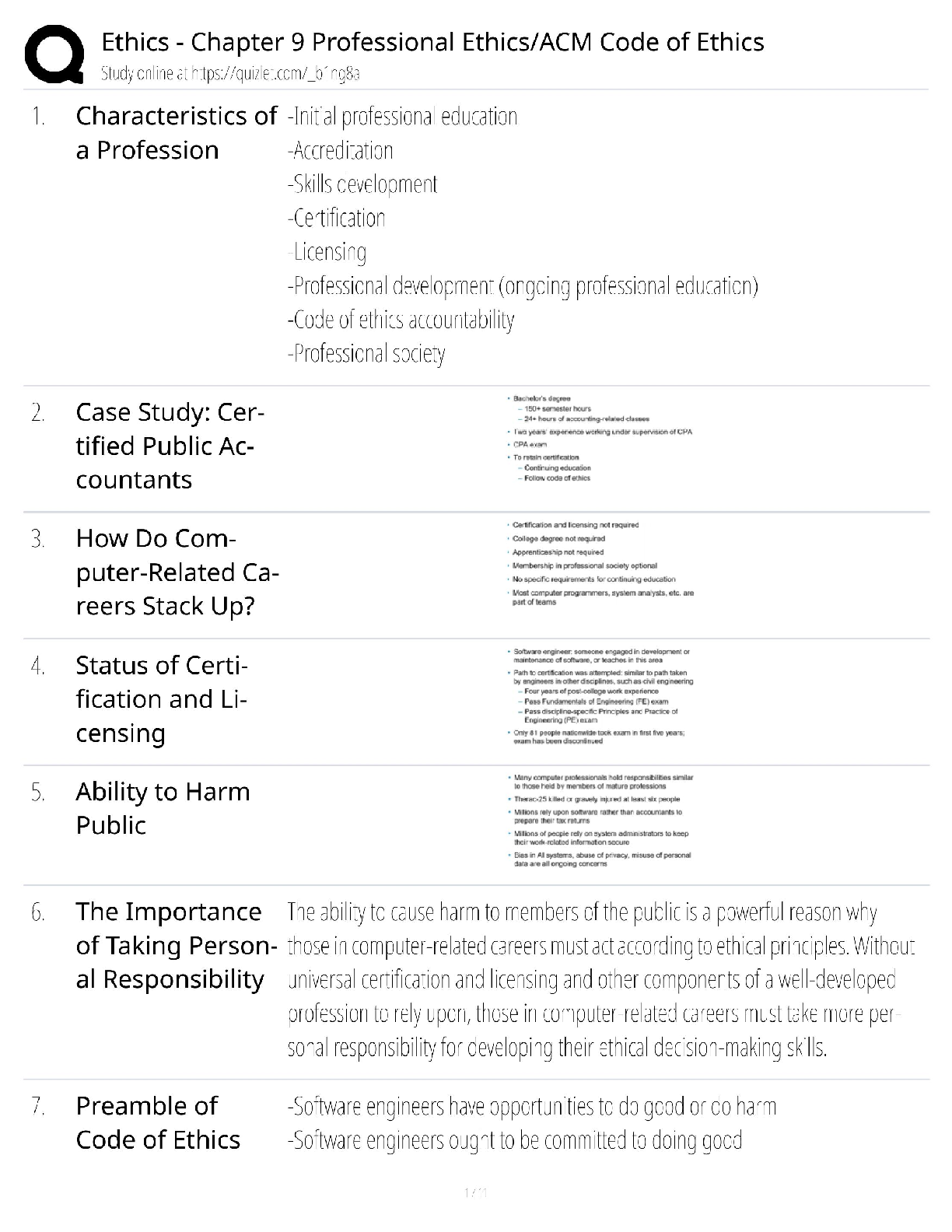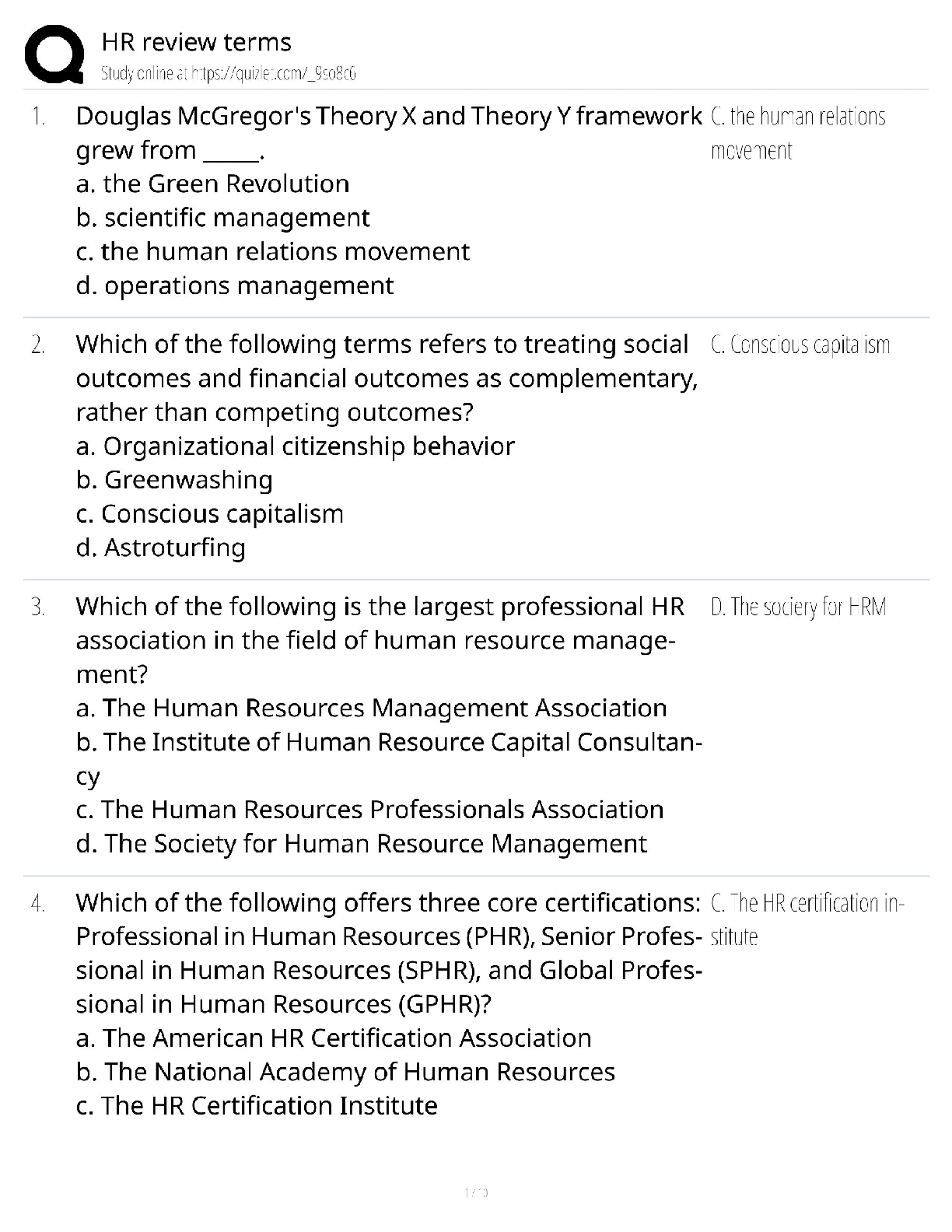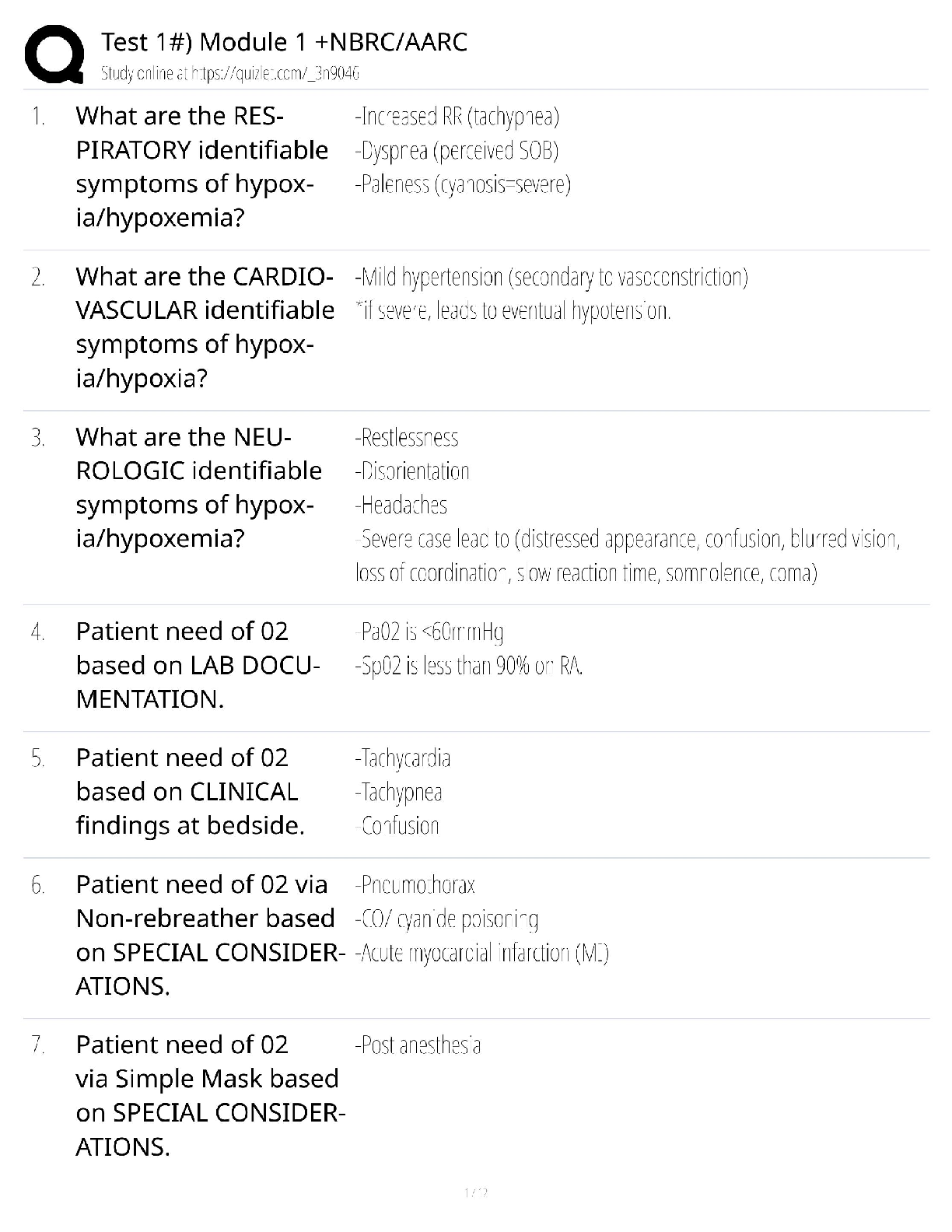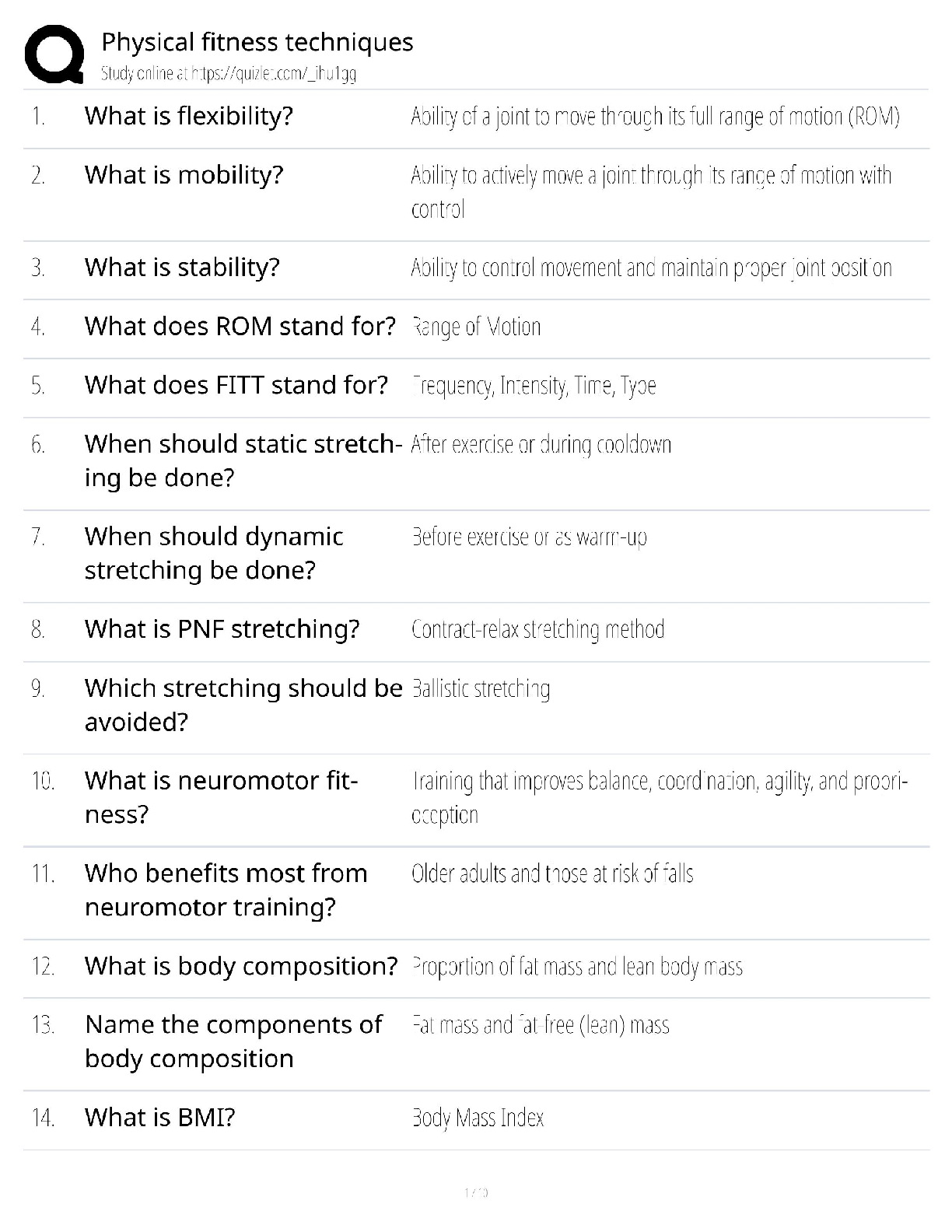*NURSING > QUESTIONS & ANSWERS > MDC 3 Exam 1 Questions and Answers with Complete Solution (All)
MDC 3 Exam 1 Questions and Answers with Complete Solution
Document Content and Description Below
MDC 3 Exam 1 Questions and Answers with Complete Solution What is the 2nd most common malignancy in women and 2nd leading cause of death in women? Correct Answer- Breast cancer How does breast cancer ... start? Correct Answer- From the epithelial lining of the ducts or the epithelium of the lobules 99% of breast cancers occur in what gender? Correct Answer- women breast cancer is slightly more common in what race of women? Correct Answer- white breast cancer in men is similar across? Correct Answer- all ethnic groups Risk factors for breast cancer? Correct Answer- -post menopause (increasing in age after 60) -Estrogen (HRT: hormone replacement therapy) (post menopause therapy) can be with progesterone or alone. - History or genetics (history of breast, colon, endometrial, &ovarian cancer, or family history of breast cancer) (*Gene BRCA1 or BRCA2 hold a 5-10% genetic risk) -Alcohol -Childbirth after age 30 -Obesity -Smoking -Breast cellular changes: hyperplasia, atypical appearance (increased risk) Breast cancer signs and symptoms Correct Answer- -lump in breast -swelling -skin irritation -dimpling -breast pain -nipple pain -nipple turning inward -redness -scaliness -thickening of the nipple -unusual discharge -lump in the armpit (more rare but can present itself as an orange peel) *Where is the most common location of breast cancer? * Correct Answer- *upper outer quadrant is the most glandular tissue, as a result it is the most common location of a cancer* Breast cancer screening & diagnostics Correct Answer- -history -physical assessment and examination -mammogram (less effective in younger women due to denser breast tissue) -ultrasound -MRI (gives more details than a mammogram or ultrasound) -Biopsy -Labs -Pathology Breast health large breast challenges Correct Answer- -Impaired comfort -Back pain -diffculty finding clothing that fits -expensive bras -fungal infections under breasts -redness, chaffing or rash, under breasts. Breast health small breast challenges Correct Answer- -some choose breast augmentation (important to avoid foods, medications, herbs that increase bleeding before/after surgery) -Can still perform self examination and have mammograms- but may not be as sensitive -*some evidence of increased risk for non Hodgkins lymphoma Not breast cancer* *Breast Cancer Types* Correct Answer- -*In situ* (non-ivasive) breast cancer remains in the mammary *DCIS: ductal carcinoma in situate* duct or lobules -*ILC: invasive lobular carcinoma* *IDC: invasive ductal carcinoma* *Non-invasive or In situ breast cancer is* Correct Answer- *DCIS: ductal carcinoma is situate* *Invasive breast cancer is* Correct Answer- *ILC or IDC* -the cancer grows into the surrounding tissue and can metastasize -most likely cause of skin dimpling or peau'd orange -Aggressive form : itching, rapidly growing lump, breast pain, erythema & edema *Most common invasive cancer* Correct Answer- *IDC: infiltrating ductal carcinoma* *breast cancer treatment* Correct Answer- -Surgery: breast conserving & masectomy -Radiation therapy -Chemotherapy -Hormone therapy breast conserving surgery Correct Answer- removes the entire tumor along with a margin of normal tissue and may include lymph node removal Masectomy Correct Answer- Total or simple usually involves lymph nodes Radiation therapy Correct Answer- directed therapy to the site of the cancer (original tumor) Chemotherapy Correct Answer- (S/E depends on the drugs used, frequency, and dose) -*IV therapy in 2-3 week cycles over 3-6 months* -Regular blood work is needed Most common chemotherapy drugs 2 or 3 of these drugs mixed usually Correct Answer- -Anthracyclines (doxurubicin & epirubicin) -Taxanes (paclitazel & docetaxel) -Cyclophosphadmide -Carboplatin Typical side effects of chemotherapy Correct Answer- -hair loss -nail changes -mouth sores -loss of appetite -N/V -Diarrhea -Increase risk of infection -Easy bruising or bleeding -Fatigue -Menstrual changes and infertility -"Chemo brain" Lower risk side effects of chemotherapy Correct Answer- -heart damage -risk of leukemia *-hand foot syndrome (numb, tingling, red, swollen hands & soles)* [Show More]
Last updated: 3 years ago
Preview 1 out of 24 pages

Buy this document to get the full access instantly
Instant Download Access after purchase
Buy NowInstant download
We Accept:

Also available in bundle (1)
Click Below to Access Bundle(s)

Rasmussen - MDC all combined exams and study guides(Full solution bundled exams with complete solutions)
Rasmussen - MDC III - Final Exam With Complete Solution MDC IV Exam 2 Latest 2022 Update Graded A+(Rasmussen college) MDC IV - Final Exam With Complete Solution NUR 2502 MDC 3 EXAM 2 100% VERIFIED FAL...
By Nutmegs 3 years ago
$13
7
Reviews( 0 )
$9.00
Can't find what you want? Try our AI powered Search
Document information
Connected school, study & course
About the document
Uploaded On
May 23, 2022
Number of pages
24
Written in
All
Additional information
This document has been written for:
Uploaded
May 23, 2022
Downloads
0
Views
184





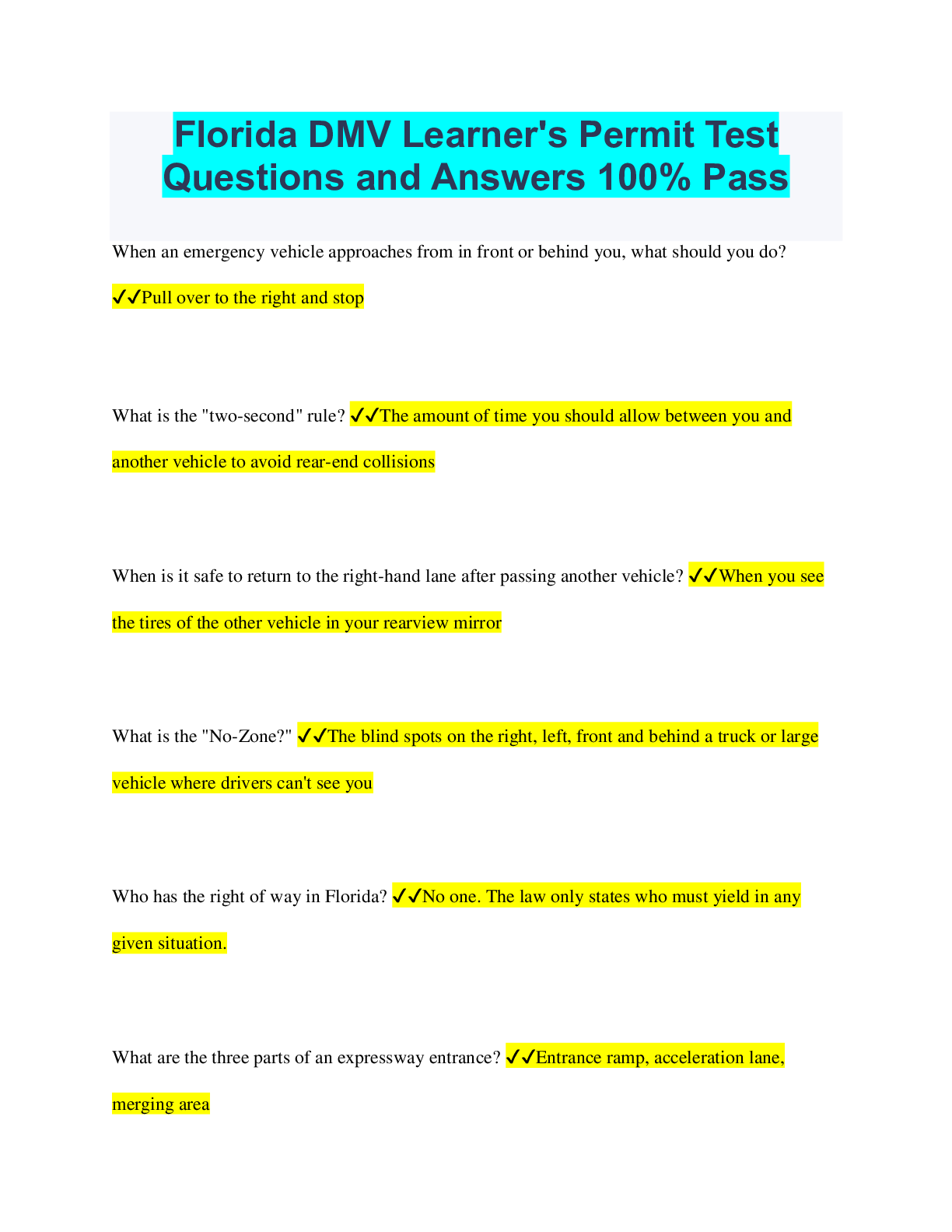


.png)






